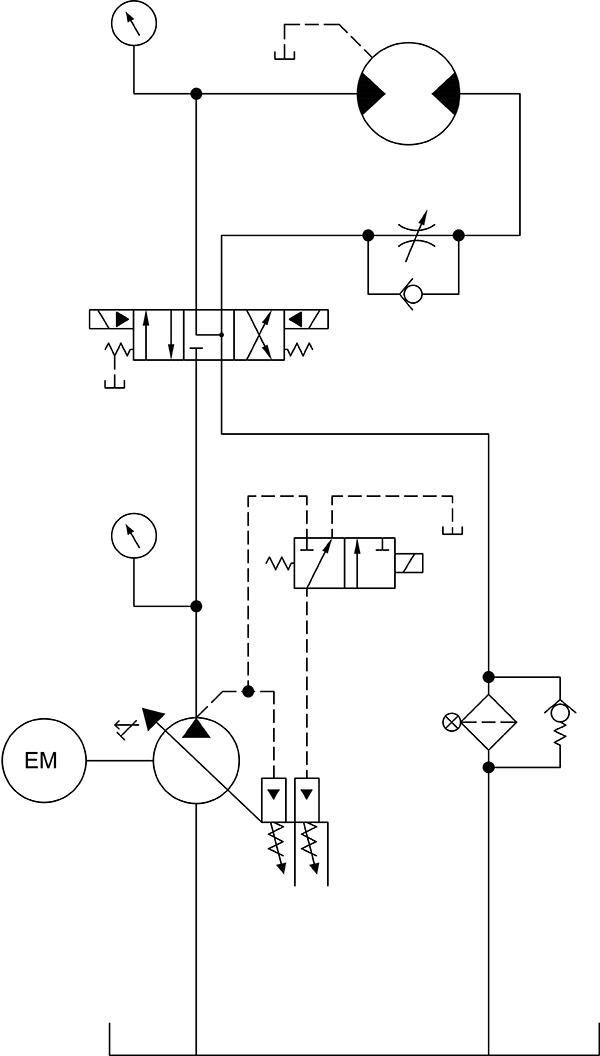 Updated July 4, 2022 with the solution below:
Updated July 4, 2022 with the solution below:
I was asked to troubleshoot a system where the customer was complaining about a slow hydraulic motor that drove a thread rolling machine for a “U” bolt they manufacture. The system had a pressure-compensated, load-sense, Rexroth pump with volume adjustment. They did not have any hydraulic drawings for the machine, so I sketched one up for them.
They had all the pump adjustments screwed in fully clockwise, fully opened the motor flow control, changed the filter, and installed a replacement hydraulic motor. They were told to measure the pump case drain flow when under full operating pressure and the flow was within an acceptable flow range indicating a good pump. They also told me when they closed the flow control, system pressure was 3,000 psi when the normal running pressure was 850 psi.
What would you do next?
Can you identify what was the problem? We welcome responses of all kinds directly to Robert Sheaf at rjsheaf@cfc-solar.comor to mgannon@wtwhmedia.com. The solution will be provided in our June 2022 issue.
Solution:
Several times I have been asked to troubleshoot slow systems only to find the customer did not understand the pump adjustments. Most pressure adjustments are clockwise (CW) to increase and counterclockwise (CCW) to decrease. Most pump volume adjustments are normally opposite, requiring CCW adjustment to “increase the flow” and CW to decrease the flow. Adjusting the volume adjustment CCW solved the slow speed problem. We also reduced the maximum pump pressures to 1,000 psi.
Filed Under: Pumps & Motors, Technologies, Trending